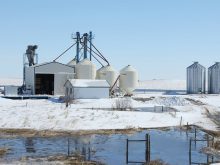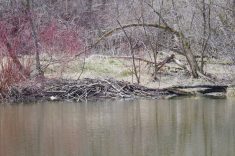Like spinning straw into gold, any farmer willing to donate a truckload of rocks could eventually get a financial credit for them.
The Bell Barn Society of Indian Head, Sask., plans to acquire a charitable number so it can issue tax receipts for in-kind donations to its restoration project. It hopes to raise $600,000 to rebuild a 124-year-old stone barn in southeastern Saskatchewan.
“We need rocks,” said society chair Frank Korvemaker.
The Bell barn has had a dozen owners since it was built in 1882, he said. If the round building had a better foundation it would have stood longer, said Korvemaker. The gumbo ground moves and that, along with the mortar falling out, has led to the barn’s crumbling.
Read Also

AgriStability updates offer stronger support for farmers
One of the most significant updates to the AgriStability program for the 2025 program year is the increase in the compensation rate.
The roof has collapsed over half the structure. Another heavy snow winter could do in the other half.
“Rather than wait until it becomes a pile of rubble,” Korvemaker and other interested parties took action. A public meeting in August that drew 120 people led to the formation of the society and a fundraising committee of 20 people.
The plan is to take the barn down and reconstruct it 30 metres to the north. Korvemaker said the move would reduce the archaeological costs of the site. Land was donated for the new location.
The barn’s present owners want it moved because gawkers trespass across their lawn to look at the barn and they want their privacy back without liabilities.
At the new site the society plans to “put piles as deep as the engineers say it needs to go … so it will stand 200, 500, 1,000 years.”
Reproduce original
Korvemaker said the barn will be rebuilt according to its original plan. That includes a sheet metal roof, about 30 square air vents and an eight-sided cupola in the centre that served as a lookout.
The barn had a diameter of 20 metres and was originally meant for horses, although over the years it housed a dairy cow herd. It hasn’t been used for more than 30 years.
The barn was built for the Qu’Appelle Valley Corporate Farm, which was managed by William Bell. The 260 sq. kilometre farm included 25 cottages for the farm workers. Bell issued them daily instructions via a telephone line that ran along the fences. Other than the Bell farm, only Regina had phones at that time.
The Bell farm, which grew mainly wheat, had bad luck with frosts and then in the 1885 Riel rebellion, the military commandeered its men, horses and supplies. By 1889 the investors gave up and the farm was divided and sold.
Korvemaker, who has worked in Saskatchewan heritage conservation for 40 years, said although the provincial and federal governments might provide funding, neither would designate the barn as a heritage site, particularly since it won’t be on its original site.
To date, the society has collected $15,000 in donations. For more information, contact the society at Box 1882, Indian Head, Sask., S0G 2K0.














